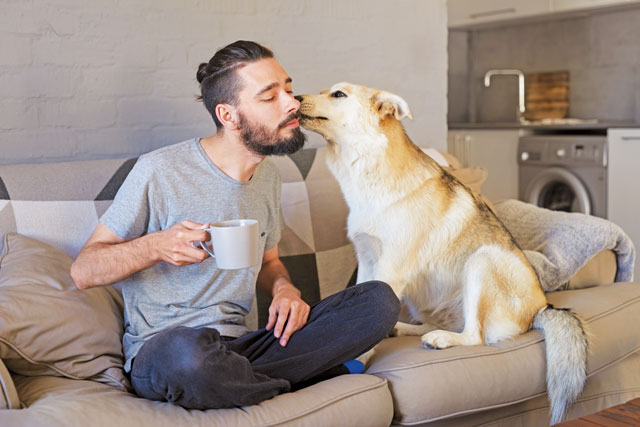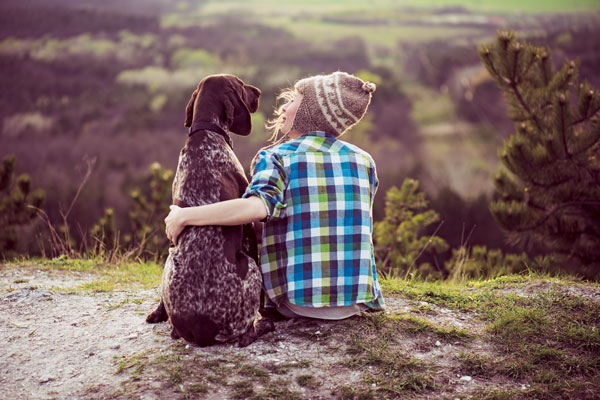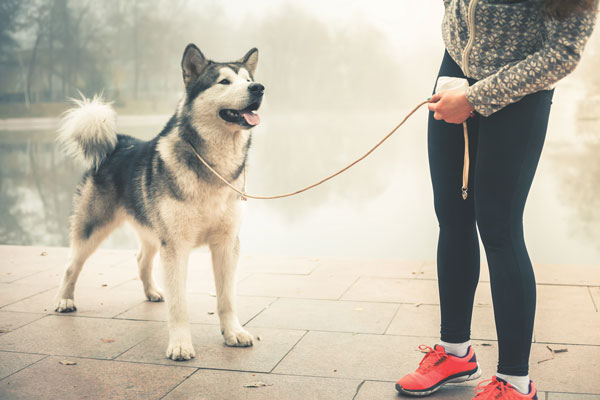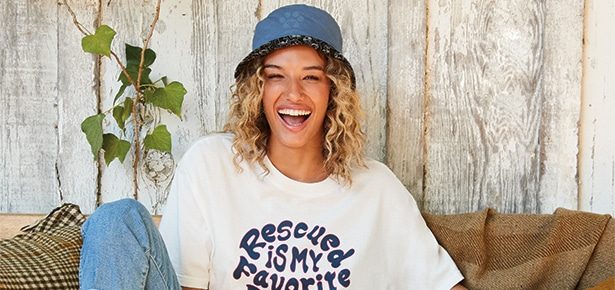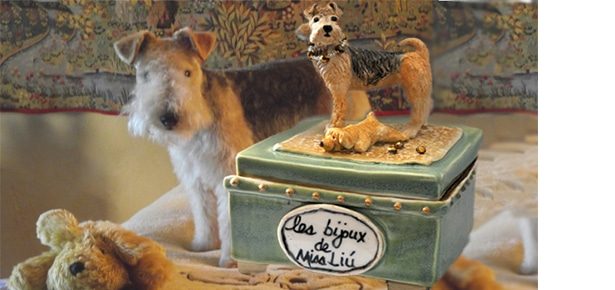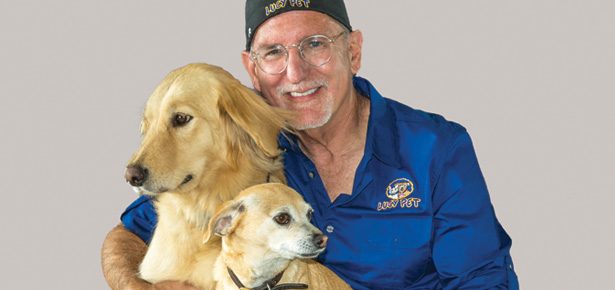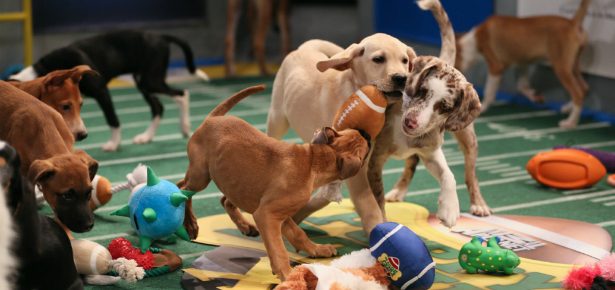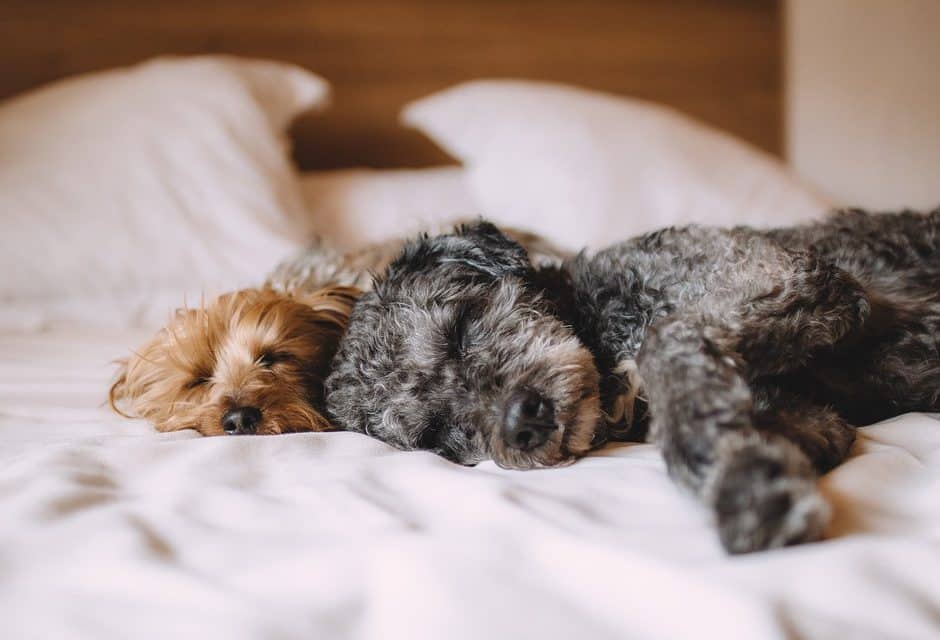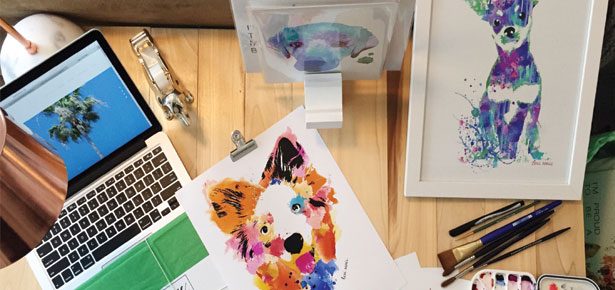

How To Choose The Right Dog For You
Finding your perfect canine personality match starts with assessing your own wants and needs. Read on for how to find your four-legged BFF...
Picture this scenario. Ever since you can remember, you’ve loved dogs. Your childhood memories are full of instances where you begged your parents for a dog only to be told that you could have one when you were older and able to take care of the pup yourself. Then one day, that day arrives, and you’re finally ready to commit to caring for a living being other than yourself. But with so many options out there, how do you begin the search for your pup?
There are over 150 American Kennel Club recognized purebred dog breeds, and this is not taking into account the variety of “mixed” breed munchkins that are also looking for homes. How then do you find a dog that will be the yin to your yang? Don’t fret, because I’m here to help you get started on your search.
Choosing a fur mate is a bit like choosing a soul mate. It’s a lifetime commitment, ‘til death do us part. It’s therefore important to consider compatibility from every angle before taking the plunge, from basic personality traits and shared interests to similar energy levels. To make the process easier, I recommend you get out a pen and paper and make a list of questions to kickstart the thinking process.
Like, what kind of lifestyle do you lead? How much money do you make? Does your apartment allow dogs? If so, are there any size restrictions? How much time in a day do you have to spend with your pup? What kind of mental and physical stimulation can you provide? Are the people you co-habit with as excited as you are about getting a dog? Are you a fan of big dogs or small dogs? Is getting a purebred dog with papers important to you, or would you prefer to rescue a dog from your local shelter? (Remember you can find purebred and mixed breed dogs alike at shelters, both puppy and adult.) Do you prefer a female dog or a male dog, and why? Do you have time for the intensive grooming that a longhaired dog might need, or would you rather go for dogs with short and easy coats? And how important is a pristinely clean home to you?
Now let’s dig deeper. Say that you’re an active hiker who can notch eight miles a day without breaking a sweat. You’re probably going to want a buddy who can keep up with you on your adventures, like a Bernese Mountain Dog or a Vizla, or a Bern-Vizla-mutt-mix. Say you live in a small apartment with barely enough room for two, then it’s likely a Chihuahua or a Dash-Bichon-Frise-mix would be better suited than a young Rottweiler. Say you have a high-stress job that leaves you with no time to take crate training breaks in the middle of your day, then an adolescent or senior dog would be a better option for your lifestyle than a puppy. Or say you hold a flexible job that allows you to nip home during your lunch break, or you have the resources to arrange for a dog walker, then a puppy might be an option to consider. But no matter what kind of dog you choose, big or small, young or old, purebred or mutt, they all require your attention, companionship, and care.
Sadly, too many well-intentioned people today make the wrong choices when picking out a companion, only to be overwhelmed by the responsibility of raising and nurturing a dog.
According to the ASPCA, each year more than 3.9 million dogs are surrendered to local shelters around the United States. Out of which more than 1.2 million dogs are euthanized annually. Reasons for these statistics include an overcrowded shelter system with neither the money nor the resources needed to rehome each and every dog that comes through their door. But such an outcome can be avoided, and very easily, with just a little bit of planning and forethought.
So, now that you have your list ready, let’s explore the different groups of dog breeds that exist, and consider if their character traits are compatible with what you have written down.
First up, we have the Herding Dogs. These dogs have a natural tendency to “herd” everyone around, from you to your friends to your Roomba. Herding dogs thrive when they have a raison d’être but can turn into a destructive tornado without one. They are fiercely independent, loyal, highly intelligent, and have an inherent need to be busy. Think Border Collies, Australian Shepherds, the Belgian Malinois, Welsh Corgis, and German Shepherds. If you have your heart set on a herding breed, prepare to put in a good amount of work. Herding dogs need to be socialized early to people and other animals, and they need their people to be strong personalities that can lead. They also need a great deal of mental and physical stimulation to be happy and healthy, but if you keep your end of the bargain, the rewards of having them as companions are limitless.
Second, we have the Hound Dogs. These dogs are obsessed with scents or, in the case of the sight hound members of this group (think Greyhounds and Salukis), prey on the run. And once they’re on to something it can be near impossible to stop them. Hound dogs have a mind of their own which can make them hard to train. While they are incredibly devoted to their people, the call of their nose or a squirrel on the run can sometimes be stronger than their need to please you. Hound dogs are also sociable, stubborn, curious, and fearless. They tend to have high energy levels and a tendency to get into mischief when bored. If you have your heart set on a hound dog—think Beagles, Dachshunds, Greyhounds, Bloodhounds, or Rhodesian Ridgebacks—recall training is a must before you let them off-leash at your local park. Plus, there is no reason why you can’t turn their talents into an opportunity for training, especially if there is some nosework or lure coursing involved.
Next, we have the Non-Sporting Dogs. Dogs from this group are many and as different as salt and sugar. Some share traits of playfulness, curiosity, cheerfulness, loyalty, and adaptability. Others exude dignity, calmness, courage, devotion, and aloofness. While choosing a member of this group, it’s important to do additional research to identify the unique personality traits of each specific breed. For instance, Bulldogs are great for apartment living and a more laidback lifestyle, being that they prefer couches to walks, but their bull-headedness can also make them stubborn and hard to train. Poodles on the other hand are extremely easy to train because of their high intelligence and eagerness to please, but this also means they can get into trouble more often if they have nothing to occupy their attention. Other examples of non-sporting dogs include, the Shiba Inu, Boston Terriers, Chow Chows, Dalmatians, and the Coton De Tulear.
Then there are the Sporting Dogs. Like their name suggests, these are active, high-energy dogs with well-rounded personalities, and keen instincts in the water. They are also immensely likable and easy to train. Many are also keen hunters. Dogs in this group are easy going, and cheerful. Some can be a tad stubborn. But most have a confident and friendly disposition and are eager to please. They thrive with daily exercise and training. The adage “a tired dog is a happy dog is a happy owner” is especially true in this instance. Some examples of sporting dogs include Golden Retrievers, Labrador Retrievers, German Shorthaired Pointers, English Setters, and English Cocker Spaniels.
Fifth, we have the feisty Terrier Group. Dogs in this group come in all sizes, colours, and shapes. From pint-sized to large, from chunky to svelte, these dogs are charming, spirited, confident, stubborn, clever, courageous, energetic, and would prefer to be your one and only, although with early socialization and continued exposure to other dogs, they can (sometimes grudgingly) accept other pack members—as long as they’re the bosses. Which means it’s imperative that you establish your boss status early on through continued obedience training. These dogs also make excellent candidates for agility training. Examples of terriers include Norwich Terriers, American Staffordshire Terriers, Miniature Schnauzers, and Russell Terriers.
Sixth, we have the pint-sized Toy Group. While dogs in this group are tiny in stature, don’t let their diminutive size fool you. They can be formidable, with a courageous streak a mile long. Think Chihuahuas, Havanese, Maltese, or Papillons. Their small sizes make them great for apartment living, and while they need a moderate amount of exercise, these pups are just as content lounging in your lap. Dogs in this group have sparkling personalities and are alert, curious, fearless, proud, and affectionate. Some can be quick to train; others require more patience and additional training, so it’s important to explore individual breeds further if this is the group that rocks your boat.
Next we have the Working Dogs. Like herding dogs, canines in this group were once bred for specific purposes, from guarding property to pulling sleds to conducting rescue operations. Working dogs thrive when given a job to do. They are quick to learn, highly intelligent, capable, strong, fearless, and some breeds can be fiercely independent and protective. Think Doberman Pinschers, Siberian Huskies, Great Danes, or the Akita. By virtue of their size, personality traits, and strength alone, these dogs are not for the faint of heart. They need strong leaders to lead, socialize, and train them. In return, you’ll have a companion that’s loyal to a fault, with a lion’s heart and courage to boot!
Last but not the least, say hello to the Mixed Category a.k.a. dogs without a clear-cut lineage. Mixed dogs tend to be a mish-mash of breeds all rolled into one super-adorable package. Thanks to their diverse gene pool, mutts tend to have a healthier constitution than their purebred brethren, which is a huge plus. And while their personalities are influenced greatly by their gene pool (with shelter dogs, you can find some really unintentionally neat combos, like, say, the spunky friendliness of the Dachshund combined with the smarts and confidence of a bully breed), there are others factors that play equally important roles. The environment in which they were born into as puppies, the amount of time they spent with their mother and siblings, and the experiences they faced out in the world before they landed in shelters are all influencers. Some mutts are confident and happy go lucky right when you meet them; others are fearful and shy, taking time to warm up. But what all mutts have in common is their enormous capacity to love and their strong desire to please their newfound pack.
Now that you have your list of questions to get you started and a basic understanding of the different dog groups and personalities out there, I’d say you are officially ready to begin your search. Welcoming a dog into your family is a fun and rewarding journey with many perks, including bolstering your mental well-being and improving your health. Ensuring you choose the right dog is the secret to a lasting, successful, and happy relationship, and I wish you the very best of luck!
Click here to learn more about the different breeds that may be right for you!
Join the newsletter and never miss out on dog content again!
"*" indicates required fields
By clicking the arrow, you agree to our web Terms of Use and Privacy & Cookie Policy. Easy unsubscribe links are provided in every email.
